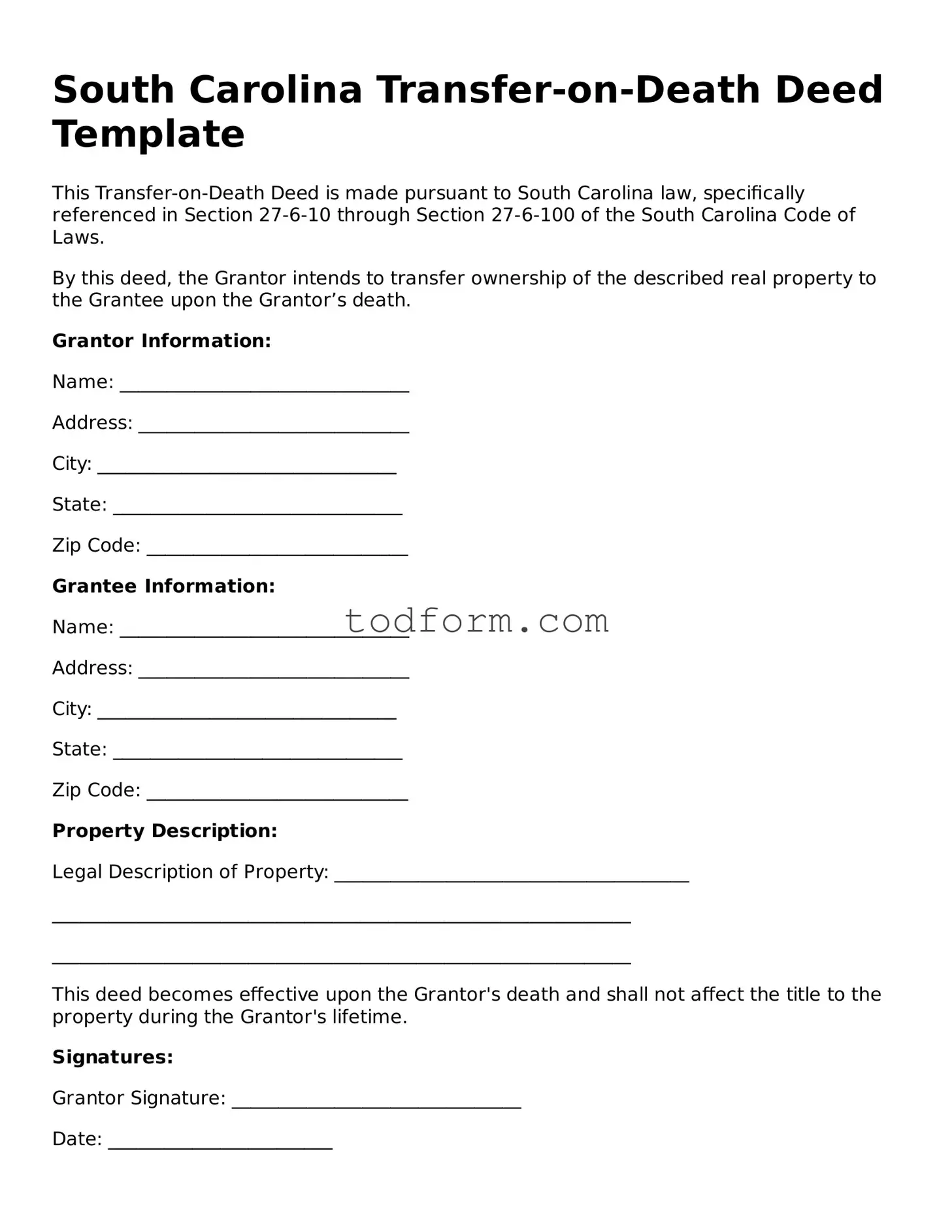South Carolina Transfer-on-Death Deed Template
This Transfer-on-Death Deed is made pursuant to South Carolina law, specifically referenced in Section 27-6-10 through Section 27-6-100 of the South Carolina Code of Laws.
By this deed, the Grantor intends to transfer ownership of the described real property to the Grantee upon the Grantor’s death.
Grantor Information:
Name: _______________________________
Address: _____________________________
City: ________________________________
State: _______________________________
Zip Code: ____________________________
Grantee Information:
Name: _______________________________
Address: _____________________________
City: ________________________________
State: _______________________________
Zip Code: ____________________________
Property Description:
Legal Description of Property: ______________________________________
______________________________________________________________
______________________________________________________________
This deed becomes effective upon the Grantor's death and shall not affect the title to the property during the Grantor's lifetime.
Signatures:
Grantor Signature: _______________________________
Date: ________________________
Acknowledgment:
State of South Carolina, County of ____________________
Before me, a Notary Public, personally appeared the above-named Grantor, who proved to me on the basis of satisfactory evidence to be the person whose name is subscribed to this instrument, and acknowledged that he/she executed the same for the purposes therein contained.
Given under my hand and seal this ______ day of ______________, 20__.
Notary Public Signature: _______________________________
My Commission Expires: _______________________________
